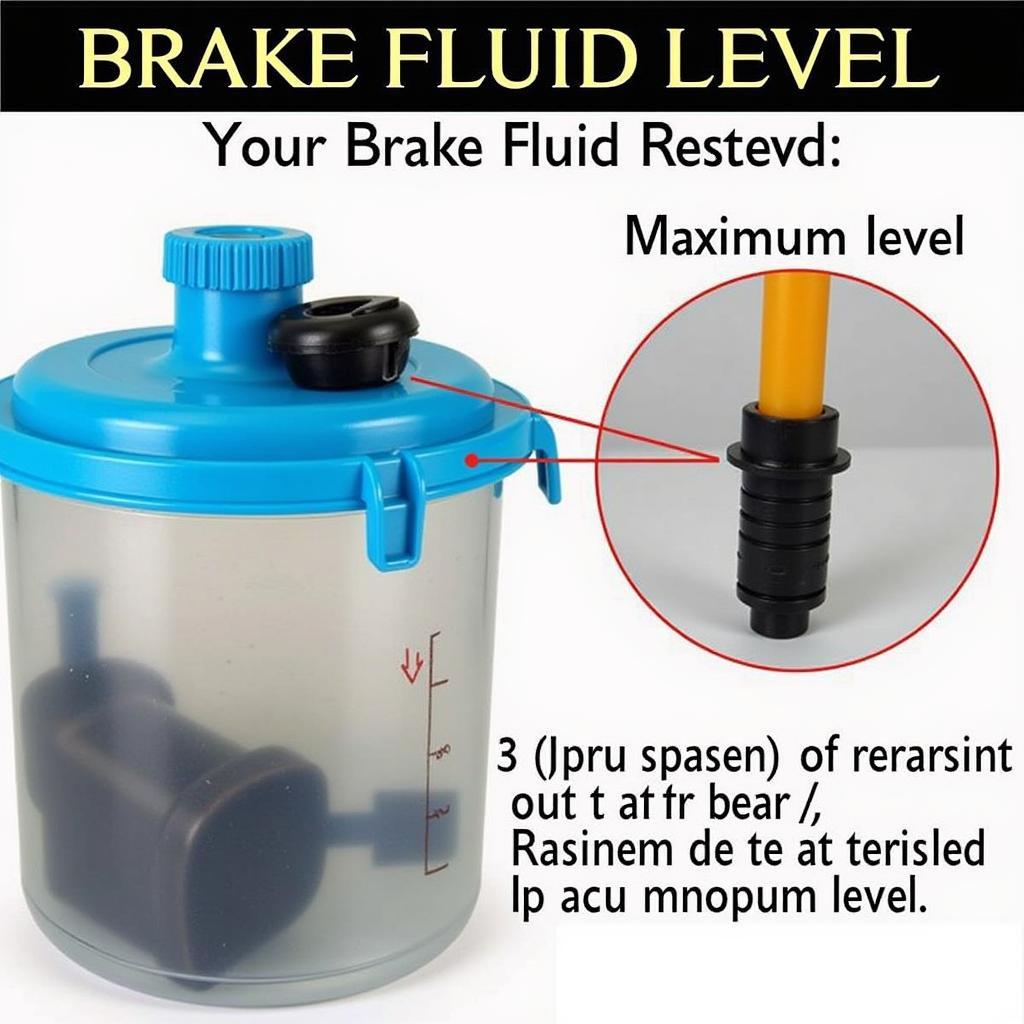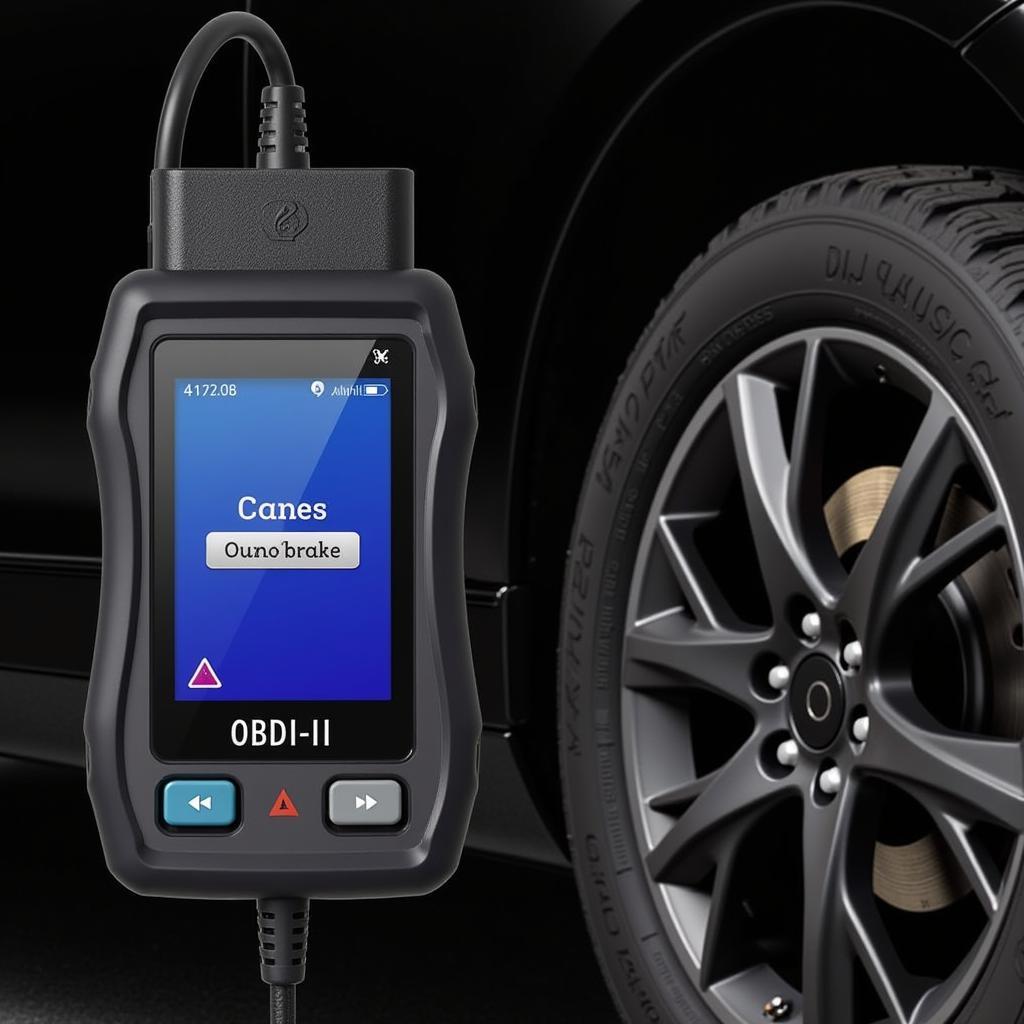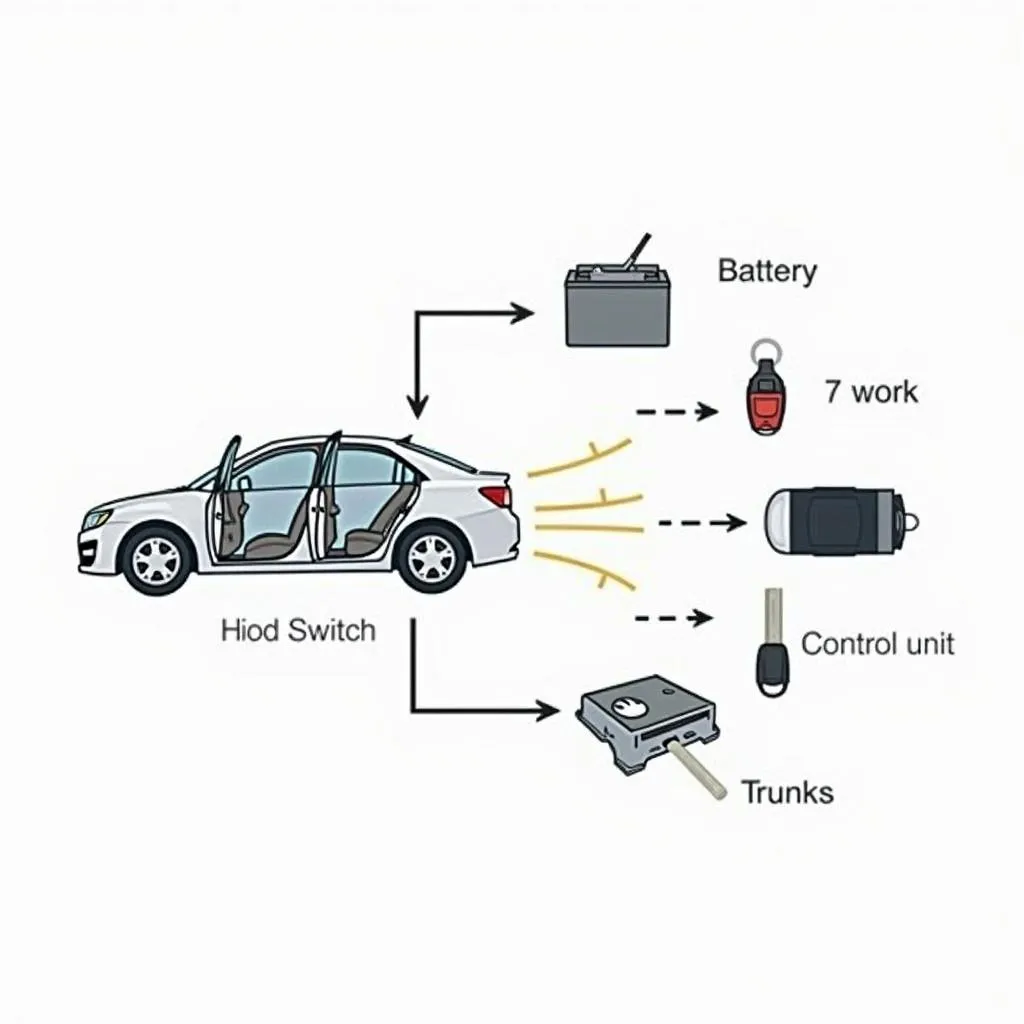The “brake over warning” light illuminating on your dashboard can be a cause for concern, but it doesn’t always signal a critical issue. While it often indicates a problem with your vehicle’s braking system, this warning light can also be triggered by several other factors. As an expert in automotive electrical engineering, specializing in remote diagnostics, programming, and software installation for automotive repairs, I’m here to guide you through understanding, diagnosing, and potentially resolving the issue behind your “brake over warning” light.
Common Causes of the Brake Over Warning Light
There are several reasons why your “brake over warning” light might be on. Here are some of the most common culprits:
- Worn Brake Pads: This is the most common cause. Most vehicles have sensors in the brake pads that trigger the warning light when the pads wear down to a certain level.
- Low Brake Fluid: Brake fluid is essential for your braking system to function properly. If the fluid level is low, it could be due to a leak or worn brake pads, and the warning light will illuminate.
- Faulty Brake Light Switch: The brake light switch activates your brake lights when you press the pedal. A malfunctioning switch can also trigger the brake over warning light.
- ABS Issues: Problems within your Anti-lock Braking System (ABS), such as a faulty sensor or control module, can trigger the warning light.
- Electrical Issues: Issues like a blown fuse, faulty wiring, or a problem with the instrument cluster can also cause the warning light to come on.
 Brake Fluid Reservoir Level Sensor
Brake Fluid Reservoir Level Sensor
Diagnosing the Problem
Before taking any action, it’s crucial to accurately diagnose the reason behind the “brake over warning” light. Here’s a step-by-step approach:
- Check Your Brake Fluid: This is the easiest step. Open your hood and locate the brake fluid reservoir. Check the fluid level, ensuring it’s between the minimum and maximum markings.
- Inspect Your Brake Pads: If you’re comfortable doing so, you can visually inspect your brake pads for wear. Look for thin pads or exposed metal. If you’re unsure, consult a mechanic.
- Check Your Brake Lights: Ask someone to observe your brake lights while you press the pedal. If the lights are not functioning correctly, it might indicate a faulty brake light switch.
- Utilize Onboard Diagnostics (OBD-II): If your vehicle is equipped with an OBD-II port, use a code reader to retrieve any stored diagnostic trouble codes. These codes can provide more specific information about the issue.
 OBD-II Scanner Diagnosing Brake System
OBD-II Scanner Diagnosing Brake System
Addressing the “Brake Over Warning”
The solution to your “brake over warning” light depends entirely on the underlying cause. Here are some potential solutions:
- Replace Worn Brake Pads: If your brake pads are worn, replacing them is crucial for safe and efficient braking.
- Add Brake Fluid: If your brake fluid is low, carefully top it off with the recommended type for your vehicle. However, simply adding fluid won’t address a leak, so consult a mechanic if you suspect one.
- Replace Faulty Components: Faulty components like the brake light switch, ABS sensors, or other parts might need replacement.
- Address Electrical Problems: Issues with wiring, fuses, or the instrument cluster might require professional diagnosis and repair.
“Ignoring a ‘brake over warning’ light can have serious consequences,” warns John Miller, Senior Automotive Engineer at Car Diag Tech. “It’s not just about your car’s performance, it’s about your safety and the safety of others on the road.”
Remote Diagnostics and Software Solutions
In some cases, the “brake over warning” light might be related to software glitches within your vehicle’s electronic control units (ECUs). Advancements in automotive technology now allow for remote diagnostics, programming, and even software installations to address these issues.
For instance, certain vehicles might experience a software bug that triggers a false “brake over warning” light. In such scenarios, a remote diagnostics session can pinpoint the issue, and a software update can be remotely installed to rectify the problem – all without visiting a mechanic physically.
Preventive Measures
While not all brake issues are preventable, some proactive measures can help minimize the chances of encountering a “brake over warning” light:
- Regular Brake Inspections: Include a brake inspection during your routine vehicle maintenance.
- Timely Brake Pad Replacement: Don’t wait for the warning light to come on. Refer to your owner’s manual for recommended brake pad replacement intervals.
- Be Mindful of Driving Habits: Aggressive driving with frequent hard braking can accelerate brake pad wear.
Conclusion
The “brake over warning” light should never be ignored. Addressing the underlying cause is crucial for your safety and the optimal performance of your vehicle. While some issues can be addressed with simple DIY fixes, others might require professional attention, particularly if they involve complex electrical or software-related problems. Don’t hesitate to seek expert help to diagnose and resolve the “brake over warning” light and ensure your vehicle’s braking system is in top condition.


